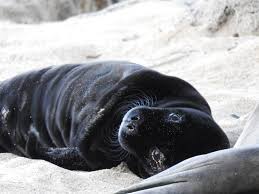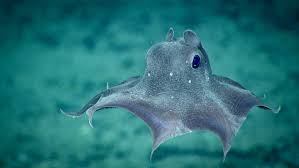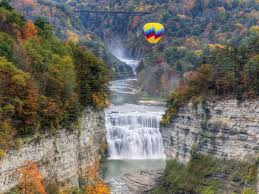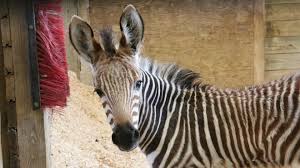Protecting the Endangered Hawaiian Monk Seals: Conservation Efforts and Challenges

The Hawaiian Monk Seals
Hawaiian monk seals, also known as “ʻIlio-holo-i-ka-uaua” in Hawaiian, are one of the most endangered species of seals in the world. These unique marine mammals are native to the Hawaiian Islands and are beloved for their playful nature and distinctive appearance.
One of the main threats to the survival of Hawaiian monk seals is habitat loss. Due to human development and climate change, their natural habitats have been shrinking, making it difficult for them to find suitable breeding and resting grounds.
Conservation efforts have been put in place to protect these magnificent creatures. The NOAA Fisheries has designated critical habitat areas for the seals and implemented measures to reduce human disturbances in these areas.
Despite these challenges, there is hope for the Hawaiian monk seals. With continued conservation efforts and public awareness, we can help ensure the survival of this iconic species for future generations to enjoy.
Next time you visit the beautiful shores of Hawaii, keep an eye out for these amazing creatures basking in the sun or playing in the waves. Let’s all do our part to protect and preserve the Hawaiian monk seals for years to come.
9 Essential Tips for Protecting Hawaiian Monk Seals and Their Habitat
- Hawaiian monk seals are an endangered species, so it’s important to respect their space and not disturb them.
- If you encounter a Hawaiian monk seal on the beach, keep a safe distance of at least 150 feet to avoid causing stress to the animal.
- Do not attempt to touch or feed Hawaiian monk seals as this can disrupt their natural behavior and may be harmful to them.
- Keep beaches clean by properly disposing of trash to prevent harm to Hawaiian monk seals and other marine life.
- Report any sightings of injured or entangled Hawaiian monk seals to local authorities or wildlife organizations for assistance.
- Avoid using fishing gear near areas where Hawaiian monk seals are present to reduce the risk of accidental entanglement.
- Support conservation efforts aimed at protecting Hawaiian monk seals and their habitats through donations or volunteer work.
- Educate yourself and others about the importance of preserving the Hawaiian monk seal population for future generations.
- Be a responsible ocean steward by practicing sustainable behaviors that help conserve marine ecosystems for all species, including Hawaiian monk seals.
Hawaiian monk seals are an endangered species, so it’s important to respect their space and not disturb them.
It is crucial to remember that Hawaiian monk seals are an endangered species, underscoring the significance of respecting their space and refraining from disturbing them. By giving these majestic creatures the necessary space and peace, we can contribute to their well-being and conservation efforts. Let us all play a role in safeguarding the habitat and tranquility of the Hawaiian monk seals for their continued survival.
If you encounter a Hawaiian monk seal on the beach, keep a safe distance of at least 150 feet to avoid causing stress to the animal.
When encountering a Hawaiian monk seal on the beach, it is crucial to maintain a safe distance of at least 150 feet to ensure the well-being of the animal. By keeping a respectful distance, you can help prevent causing stress to the seal and allow it to rest undisturbed. Remember that these beautiful creatures are protected under the law, and it is our responsibility to observe them from afar and appreciate their presence in their natural habitat.
Do not attempt to touch or feed Hawaiian monk seals as this can disrupt their natural behavior and may be harmful to them.
It is important to remember not to attempt to touch or feed Hawaiian monk seals, as this can disrupt their natural behavior and may be harmful to them. These beautiful creatures need their space and interacting with them inappropriately can cause stress and harm. By respecting their environment and observing them from a safe distance, we can help ensure the well-being and conservation of the Hawaiian monk seals for generations to come.
Keep beaches clean by properly disposing of trash to prevent harm to Hawaiian monk seals and other marine life.
Properly disposing of trash is crucial in protecting Hawaiian monk seals and other marine life. By keeping beaches clean and free of litter, we can help prevent harm to these endangered species. Trash left on the beach can pose a threat to monk seals as they may ingest or become entangled in it. Let’s all do our part in preserving the natural beauty of Hawaii by ensuring that our waste is disposed of responsibly, ultimately safeguarding the well-being of the marine ecosystem.
Report any sightings of injured or entangled Hawaiian monk seals to local authorities or wildlife organizations for assistance.
It is crucial to report any sightings of injured or entangled Hawaiian monk seals to local authorities or wildlife organizations for immediate assistance. By promptly notifying the appropriate authorities, we can ensure that these vulnerable marine mammals receive the necessary care and treatment to recover from their injuries or be safely released from entanglements. Your quick action can make a significant difference in the well-being and conservation of Hawaiian monk seals, helping to protect this endangered species for generations to come.
Avoid using fishing gear near areas where Hawaiian monk seals are present to reduce the risk of accidental entanglement.
To protect the Hawaiian monk seals and reduce the risk of accidental entanglement, it is crucial to avoid using fishing gear near areas where these precious marine mammals are present. By being mindful of our activities and avoiding potential hazards, we can help ensure the safety and well-being of Hawaiian monk seals in their natural habitat. Let’s all work together to create a safe environment for these magnificent creatures to thrive.
Support conservation efforts aimed at protecting Hawaiian monk seals and their habitats through donations or volunteer work.
Supporting conservation efforts aimed at protecting Hawaiian monk seals and their habitats is crucial for the survival of this endangered species. By donating to reputable organizations or volunteering your time, you can make a meaningful impact in preserving the natural environment that these seals rely on. Your support helps fund important research, habitat restoration projects, and public awareness campaigns that are vital for ensuring the long-term survival of Hawaiian monk seals. Joining hands with conservation efforts not only benefits the seals themselves but also contributes to the overall health of Hawaii’s marine ecosystem.
Educate yourself and others about the importance of preserving the Hawaiian monk seal population for future generations.
It is crucial to educate yourself and others about the significance of preserving the Hawaiian monk seal population for future generations. By raising awareness about the challenges these endangered seals face and the importance of conservation efforts, we can all play a part in ensuring their survival. Through education and advocacy, we can inspire positive change and foster a deeper appreciation for these remarkable marine mammals, ultimately contributing to a brighter future for the Hawaiian monk seals and the ecosystem they are a vital part of.
Be a responsible ocean steward by practicing sustainable behaviors that help conserve marine ecosystems for all species, including Hawaiian monk seals.
As ocean lovers, it is crucial to be responsible ocean stewards by adopting sustainable behaviors that contribute to the conservation of marine ecosystems, benefiting all species, including the endangered Hawaiian monk seals. By being mindful of our actions, such as reducing plastic waste, respecting marine wildlife habitats, and supporting conservation efforts, we can play a vital role in preserving the delicate balance of our oceans and ensuring a brighter future for these magnificent creatures.



